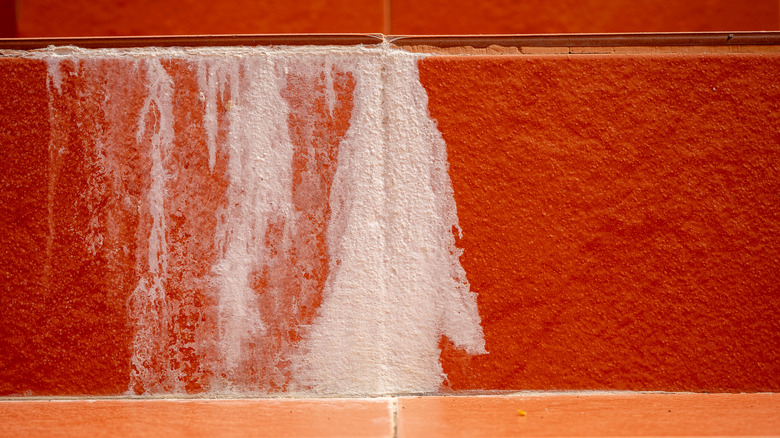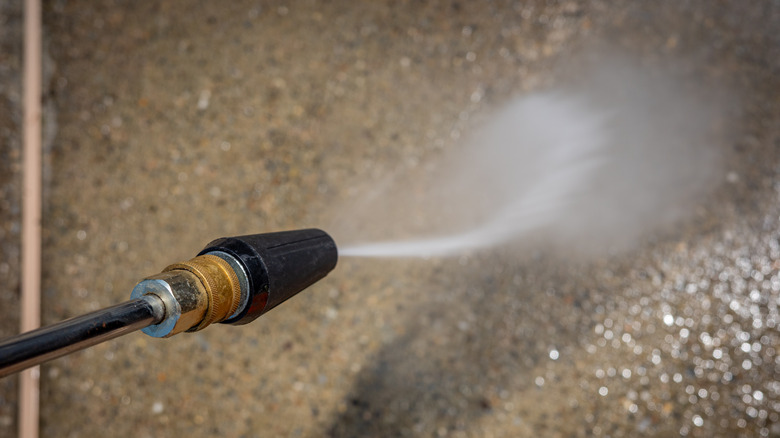How To Prevent Efflorescence Before It Leads To Unsightly Mold Growth
We may receive a commission on purchases made from links.
If you've noticed a white, powdery substance on a surface in your home, you may accidentally mistake it for mold at first. However, upon closer inspection, you'll see that it's something else: efflorescence. Efflorescence is what that white powder on your walls really is – it can appear on a surface wherever moisture is present, but many people mistake it for mold and start to panic a bit too soon.
Because efflorescence develops when there's a lot of moisture in an area, it's often likely to form in bathrooms or basements, where there are leaky pipes and other sources of moisture. Efflorescence commonly grows on concrete, stone, brick, stucco, and similar surfaces. Efflorescence itself isn't dangerous and can be removed easily. However, if you notice efflorescence, it's a clear sign that you may have moisture problems that could also lead to mold growth and structural damage if left unchecked. While efflorescence isn't harmful, it can be unsightly, so you'll likely want to take steps to eliminate it. You should also check for moisture problems and make any necessary repairs to prevent worse damage in the future. To remove efflorescence, simply scrub it away with a brush or rinse it off with a hose. If you need a bit more cleaning power, you can use a commercial chemical cleaning product or a natural ingredient such as vinegar.
How to remove efflorescence from surfaces
To remove efflorescence from concrete or another surface, try brushing it off first. Use a strong, stiff brush for best results. You can also use either a standard garden hose or a pressure washer to remove it with water. However, be sure to dry the surface after you're done, or efflorescence may develop again. You can also apply a chemical concrete cleaner such as the Eco Etch Pro Concrete Etcher Cleaner. This will help you remove the substance more easily and etch surfaces for optimum coating adhesion. As an alternative to a commercial cleaning product, you can also banish efflorescence with an item you already have in your kitchen: vinegar. A 50/50 water and white vinegar mix can work well to eliminate efflorescence. You can simply coat the area with the vinegar mixture using a scrub brush. Then, let it dry for 48 to 72 hours.
You should also take steps to prevent efflorescence from developing again by identifying and eliminating sources of moisture — this will also help prevent mold growth and eventual structural damage. Be mindful of gutters and downspouts, and avoid letting water drip onto the surfaces. Repair all leaks and fix any cracks in masonry you notice to prevent water from getting deeper inside and causing hidden damage to your home's walls. Adding a waterproofing coating to the surface of masonry can help prevent water from causing efflorescence.

